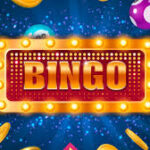Bingo has come a long way since its early days in community halls. Once limited to physical spaces and paper cards, this popular pastime now fits neatly into your pocket. Smartphones have reshaped how and where people enjoy bingo, blending convenience, innovation, and fun. Let’s dive into the captivating journey of bingo and see how technology is changing how we play.
Bingo began as a social activity, bringing communities together in church halls and community centres. Friends and neighbours gathered, daubers in hand, hoping to mark their cards first and shout the magic word. The atmosphere was electric, filled with anticipation, laughter, and friendly competition.
But times have changed dramatically. With the rapid advancement of technology, the beloved game of bingo has moved beyond brick-and-mortar halls. Today, it’s accessible through smartphones, making it more convenient and widespread than ever before. Let’s explore how this classic game evolved from crowded halls into an engaging digital pastime.
Early Beginnings: Community Halls and Social Gatherings
Originally, bingo was played in large halls and church basements. Each player bought physical cards marked with random numbers. A caller would announce numbers, and players quickly marked their cards. Winning depended on luck and attention, creating thrilling suspense with each call.
These gatherings served as community bonding events. People enjoyed the social interaction, refreshments, and excitement. Bingo was not just a game but a social glue that regularly brought diverse groups together.
The Transition to Digital: Online Bingo
The significant shift began with the rise of the internet in the late 1990s and early 2000s. Online platforms introduced bingo to players in the comfort of their homes. Players no longer had to travel or adhere to specific schedules. They could log on anytime and enjoy games instantly.
Online bingo retains its social essence by incorporating chat rooms. Players interacted virtually, replicating the hall experience digitally. Websites provided various game versions, attractive bonuses, and jackpot incentives, drawing a broader audience.
Smartphones Change the Game
Smartphones have become the true game-changers. The introduction of mobile apps meant that bingo could be played anywhere, anytime. Commuting, waiting in queues, or relaxing at home—all these moments became opportunities to enjoy a quick round.
Mobile bingo apps offered streamlined, user-friendly interfaces. Instant notifications, personalised experiences, and secure payment methods boosted their popularity. Players appreciated these apps’ ease of use and convenience, driving rapid adoption worldwide.
Enhanced Features and Engaging Gameplay
Modern apps offer more than traditional bingo. Exciting graphics, animations, and themed games enhance user experience. Players can choose from classic or innovative formats, keeping gameplay fresh and engaging.
Features like auto-daubing ensure players never miss a number. Multi-card options increase the thrill, allowing users to manage several cards simultaneously. Leaderboards, tournaments, and social sharing options create a sense of community and friendly competition, echoing the original spirit of bingo halls.
Accessibility and Inclusivity
Smartphone technology has made bingo accessible to a wider audience, including younger generations who might never visit traditional bingo halls. This digital shift opened the game to individuals with mobility issues or limited access to community events, significantly broadening its appeal.
Additionally, affordable mobile data and widespread smartphone usage mean even more people worldwide can participate. This inclusivity ensures that bingo continues growing in popularity, becoming a global pastime.
Social Interaction in the Digital Era
One might worry that digital bingo could isolate players, removing the social element. However, the opposite is true. Apps often include robust chat functions, emojis, and reactions, allowing players to engage, celebrate wins, and share experiences.
Online communities form around these platforms, bridging geographical gaps. Players build friendships and maintain connections, much like they would in traditional settings. Thus, technology enhances rather than diminishes the social aspect of bingo.
Regulatory Changes and Trust
As bingo shifted online, regulatory bodies adapted quickly. Licensing authorities ensure fair play and protect users from fraud. Due to stringent regulations and transparent practices, trust in digital bingo platforms has grown significantly.
Well-known operators invest heavily in secure technology, customer support, and responsible gaming measures. Players now confidently enjoy online bingo assured that their privacy, funds, and gaming experience are safeguarded.
Future Trends: Virtual Reality and Beyond
The evolution of bingo continues. Virtual reality (VR) and augmented reality (AR) promise even more immersive experiences. Imagine putting on a VR headset, stepping into a digital bingo hall, and interacting with players worldwide.
Technological innovations will continue shaping bingo, making it more interactive and enjoyable. These advancements ensure the game remains relevant, entertaining, and exciting for generations.
Closing Remarks
Bingo’s journey from halls to smartphones highlights how technology transforms traditional pastimes. This shift has made the game more accessible, convenient, and engaging. Smartphones haven’t just preserved bingo and revitalised and enhanced it, opening it up to new generations and diverse audiences.
As we look ahead, innovations like VR and AR will further enrich the gameplay. Despite these changes, bingo’s essence remains intact: a fun, social game enjoyed by millions worldwide. The future is promising, ensuring bingo’s place in our pockets—and our hearts—for many years to come.







